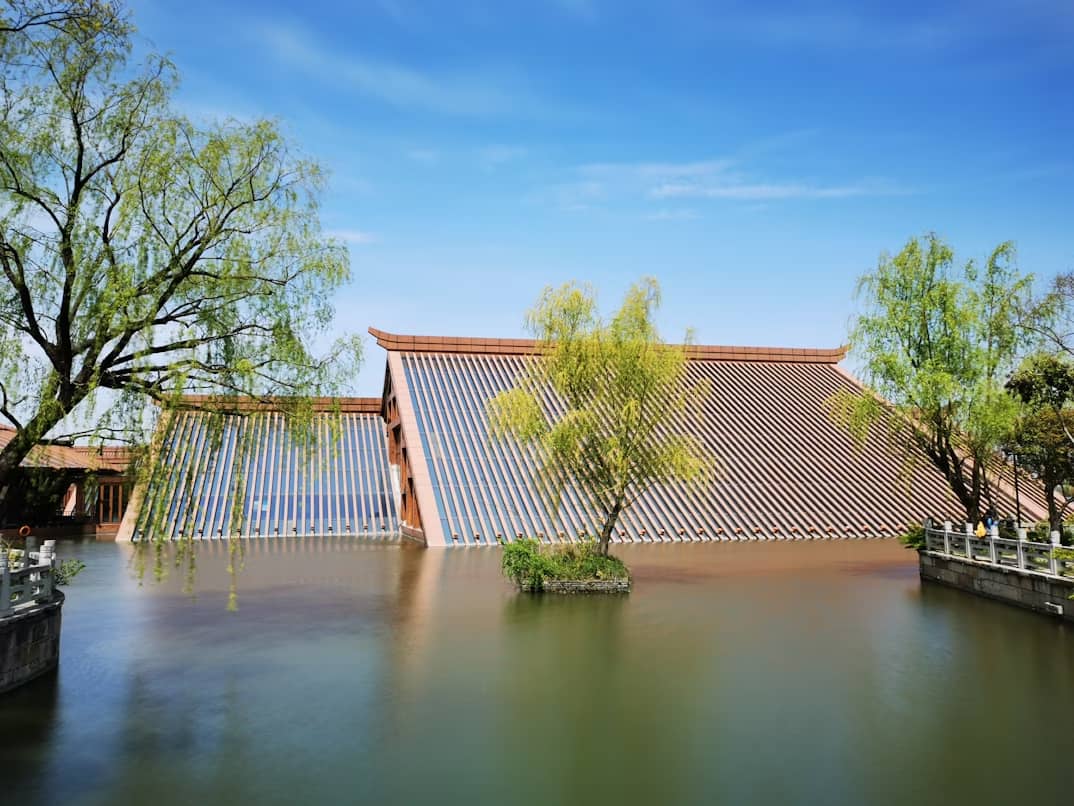
Want to protect your property from flood water damage?
Every homeowner dreads the thought of flood water invading their home. After all, water damage leads to:
- Expensive repairs
- Structural problems
- Health hazards
Here’s the problem:
Flood water damage is way more destructive than most people realize. To properly protect your property and handle the aftermath of flooding, you need to understand exactly how flood water impacts your home’s structure.
Without this knowledge, you’re setting yourself up for devastating and costly surprises.
In this guide, everything you need to know about flood water damage and its impact on property structures will be broken down.
Let’s jump in!
What you’ll discover:
- How Does Flood Water Actually Damage Structures?
- The Different Categories of Water Damage
- Timeline: What Happens When Flood Water Hits
- 4 Critical Areas Most Vulnerable to Flood Damage
How Does Flood Water Actually Damage Structures?
Flood water damage isn’t just about getting things wet and calling it a day.
Here’s why: Flood water affects your property’s structure in ways that can compromise its integrity for months or even years after the initial flooding event.
When flood water enters your home, it doesn’t discriminate. It seeps into every porous material it encounters, from drywall and insulation to wooden beams and flooring.
The numbers tell the story pretty clearly. Around 14,000 people are affected by water damage daily in the U.S. And here’s the kicker…
Just 1 inch of water can cause around $25,000 in damage to a home.
Think about that for a second. One single inch.
This is where working with experienced residential water damage restoration experts becomes crucial for properly assessing and addressing structural damage before it becomes a much bigger problem.
Water Absorption and Material Deterioration
Think of your home’s materials like sponges…
When flood water hits, materials like drywall, insulation, and wood framing absorb water rapidly. This causes:
- Swelling and warping of wood materials
- Deterioration of adhesives and joints
- Weight increase that stresses structural elements
But here’s what most property owners don’t realize…
The real damage often happens after the visible water is gone. As materials remain wet, they continue to weaken and can lead to structural failures weeks or months later.
Pretty scary, right?
The Different Categories of Water Damage
Not all flood water is created equal.
Water damage professionals classify flood water into three distinct categories, and understanding these differences is critical for proper restoration:
Category 1: Clean Water
Water from clean sources like supply lines or rainwater. While it’s the “cleanest” type, it can still cause significant structural damage if not addressed quickly.
Category 2: Gray Water
Moderately contaminated water from sources like washing machines or dishwashers. This water carries mild to moderate health risks.
Category 3: Black Water
Heavily contaminated water from sewage backups, rivers, or floods. This water poses severe health risks and requires specialized handling.
Here’s the scary part:
Even clean water can become gray or black water if it sits stagnant for more than 48 hours. The longer flood water remains in your property, the more dangerous and destructive it becomes.
It really is that simple.
Timeline: What Happens When Flood Water Hits
Want to know exactly how flood water damage progresses?
Understanding the timeline of flood water damage helps you grasp why quick action is so important:
Within Minutes to Hours
- Carpets and flooring absorb water
- Furniture begins to stain and warp
- Electrical systems become hazardous
- Personal belongings start getting destroyed
24-48 Hours
- Humidity rises throughout the structure
- Drywall begins to deteriorate
- Metal components start to corrode
- The first signs of mold growth appear
48-72 Hours
- Mold growth accelerates rapidly
- Structural materials continue weakening
- Indoor air quality becomes a serious concern
- Even clean water can turn into gray or black water
One Week and Beyond
- Serious structural damage becomes apparent
- Extensive mold colonies establish themselves
- Materials may need complete replacement rather than restoration
- Health risks increase significantly
This timeline shows exactly why professional assessment and restoration needs to happen as quickly as possible after flooding occurs.
4 Critical Areas Most Vulnerable to Flood Damage
Every part of your home is at risk during flooding, but some areas are especially vulnerable.
Let’s take a closer look…
1. Foundation and Basement Areas
Your foundation bears the brunt of flood water impact. Hydrostatic pressure can cause foundation walls to crack or collapse.
And get this… 98% of basements experience some level of water damage at least once. That’s almost every basement in America.
2. Electrical and HVAC Systems
Flood water and electricity don’t mix well…
When flood water reaches electrical panels or HVAC equipment, it creates immediate safety hazards and expensive replacement costs.
3. Flooring and Subflooring
Flooring takes a beating during floods:
- Hardwood floors cup, warp, and may need complete replacement
- Carpet and padding act like giant sponges and usually can’t be saved
- Tile floors may survive, but the subfloor underneath often doesn’t
4. Insulation and Drywall
These materials are like magnets for flood water…
Both typically need replacement after significant flooding, not just drying out.
The Hidden Costs of Flood Water Damage
Think flood damage is just about what you can see?
Think again.
The average insurance payout for water damage claims is $11,605, but that’s just the beginning. Hidden costs include:
- Temporary housing while repairs are completed
- Lost personal belongings that can’t be replaced
- Increased utility bills from dehumidifiers and fans
- Potential health issues from mold exposure
- Decreased property value if damage isn’t properly addressed
But here’s what really gets expensive…
Delayed action. The longer you wait to address flood water damage, the more expensive restoration becomes. What might cost a few thousand dollars to fix immediately can turn into tens of thousands if left untreated.
Why Professional Assessment is Essential
Want to avoid making costly mistakes after flood damage?
Professional assessment isn’t optional – it’s essential. Professionals have equipment to detect moisture in hidden areas and can identify damage you can’t see.
They also understand:
- Which materials can be saved versus replaced
- How to prevent mold growth
- Proper drying techniques
- Insurance requirements for documenting damage
Trying to handle significant flood damage yourself almost always leads to bigger problems down the road.
Why waste time and money figuring it out when there are proven professionals ready to help?
Preventing Future Flood Water Damage
The best defense against flood water damage is preparation…
While you can’t control when flooding occurs, you can take steps to minimize its impact:
- Install sump pumps and backup power systems
- Waterproof basement walls and foundation areas
- Keep gutters and drainage systems clear and functioning
- Store valuable items in elevated areas
- Know your flood risk and have appropriate insurance coverage
Remember, standard homeowners insurance doesn’t cover flood damage. You need separate flood insurance, and it typically takes 30 days to take effect.
Don’t wait until it’s too late to learn this lesson the hard way.
Wrapping It Up
Flood water damage to property structures is serious business that requires immediate professional attention.
The key takeaway? Time is your enemy when it comes to flood water damage. The faster you act, the more you can save – both in terms of your property and your wallet.
Here’s your action plan:
- Contact professionals immediately after flooding
- Document all damage with photos for insurance
- Remove standing water as quickly as possible
- Don’t attempt major restoration work yourself
Understanding how flood water impacts your property’s structure helps you make informed decisions about protection, insurance, and restoration.
Advertise with the mоѕt vіѕіtеd nеwѕ ѕіtе іn Antigua!
We offer fully customizable and flexible digital marketing packages.
Contact us at [email protected]

















